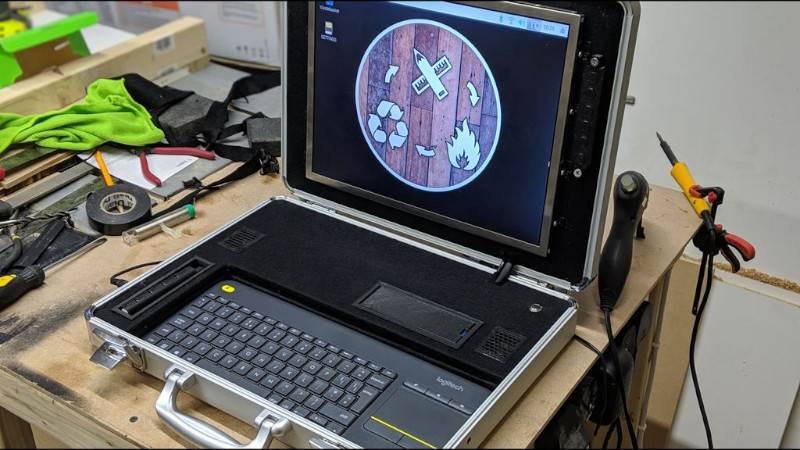Decent laptop computers have been available for decades now. Despite this, there’s still something charming and enigmatic about a computer hidden within a briefcase. [MakeFailRepeat] wanted just such a rig, so did the maker thing and built one.
The project began when [MakeFailRepeat] was donated a 15″ monitor that ran on 12V. Naturally, it needed to be used in an awesome project, and the build began. MDF panels were cut to mount the screen inside an aluminium briefcase, and covered in black felt for a pleasing look and feel. A Logitech wireless keyboard and touchpad combo is used for input. The brains of the operation is a Raspberry Pi, equipped with a UPS HAT to handle battery and mains power, and an Adafruit Speaker Bonnet for sound.
The project was inspired by the classic video game Captive, released on Amiga, Atari, and MS-DOS platforms way back in 1990. While we’re pretty sure [MakeFailRepeat] isn’t trapped on a space station, his briefcase computer should nonetheless prove useful. A computer isn’t the only thing you can build into a briefcase, though. Video after the break.
















Very nice job! I really like your total layout. Makes me wish I had documented my briefcase PC from 2008 with an FIC ION A603 motherboard running a severely stripped down version of Windows XP. The ION ran off 12V so a single power adapter ran everything.
Depending on how long it took to build, you might even call it a brief case computer.
I see you too, are a man of fine taste
1. Open up briefcase computer in Starbucks
2. Hold finger up to imaginary earphone
3. “Yes sir, I have the football. Awaiting order.”
4. Poise finger over red button on keyboard
5. Not sure what happens next, but it will be interesting
>5. Not sure what happens next, but it will be interesting
and maybe letal :-/
Please record a video when trying it.
Hold my beer!!! 🍺
Nobody will notice.
It looks like he could have stuffed in a mini ITX board with such a large case?
Why MDF? Seems like a heavy material to use for a portable. (2-3x density of wood).
If want that solid feel, maybe should have used cement (seen several cement enclosures on here recently).
It was cheap, simple and I had to travel a total distance of 3 feet from my workbench to get it 😉
But a concrete laptop! Now you’ve got me thinking 😃
Well played!
I’m all about a good computer in a suitcase build, really. Thanks. Any chance you could link to a different “thing you can build in a suitcase”? The comments on that post are atrocious all around.
Sorry to say But I built the commercial product back in 2005 through to 2010 ish. ComputerDJ / Valewaytechnology in the UK. The 00DJ and later the 00VJ. See video of version 2 – https://www.youtube.com/watch?v=2wVseI8HsVs
You did that in 2005? For the love of God tell me you’ve gotten a new haircut!
Neat (as in organized and well executed) build. Did something similar back in 1999 with a HF aluminum case and some other goodies – like a 1 GB 3.5″ spinning rust drive.. almost large for the time. Ran on a 12V7A SLA and a 24V Dallas switcher. Getting the internal and external miter joints to look good was the toughest part of the build. If I was to do it again, I’d use a NanoPi-T4.
Here is my take on a briefcase computer. I planed to cover it but was too lazy. And i guess its cooler this way.
https://www.bostjancadez.art/sl/macboxpro
There’s an easier way to do this: buy a briefcase, buy a laptop, put laptop inside briefcase.